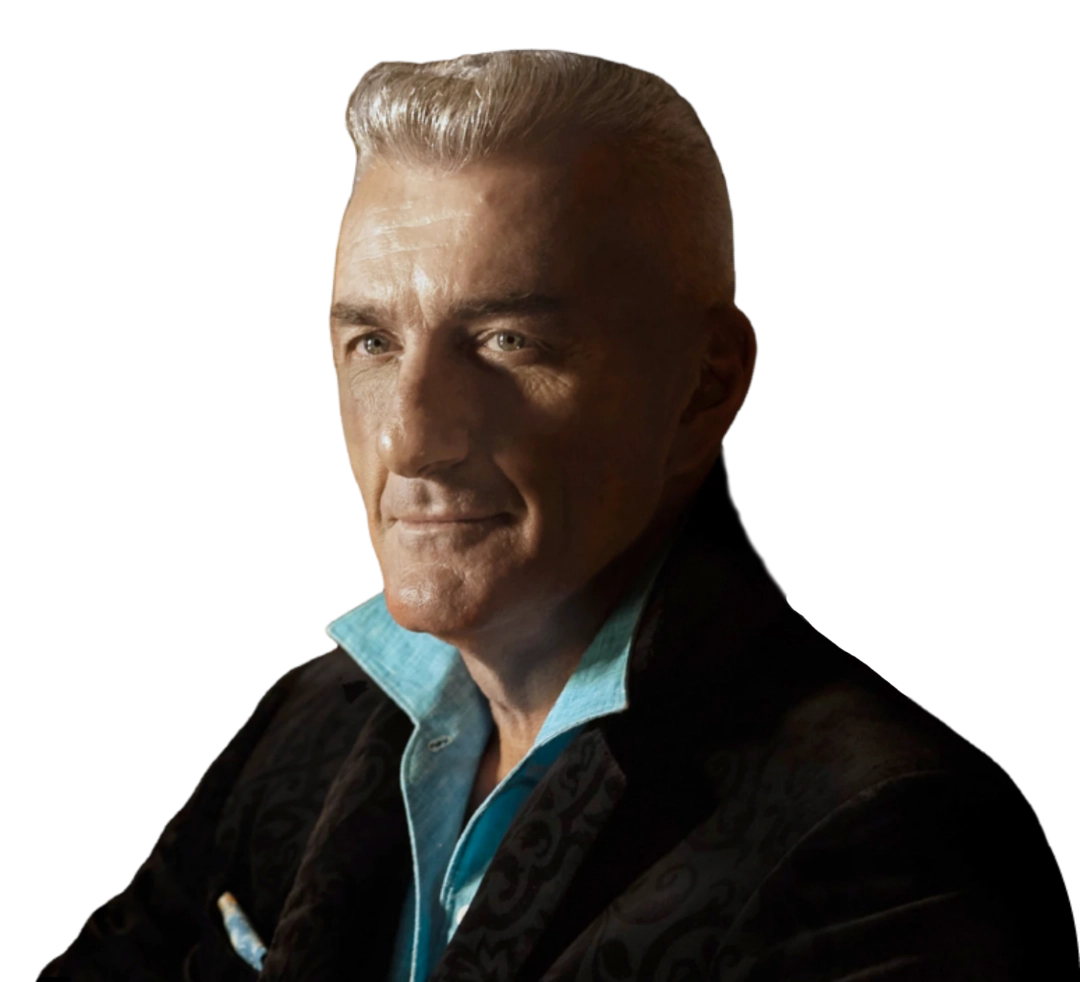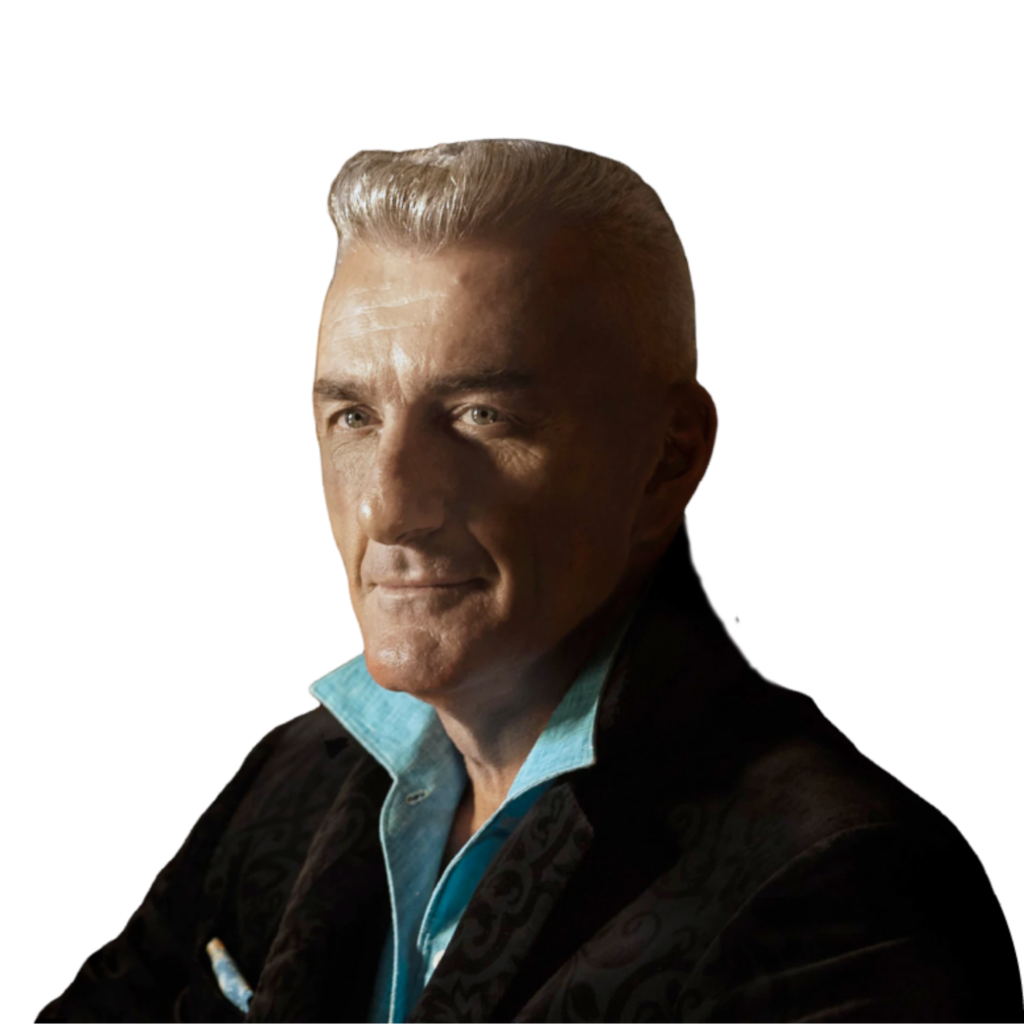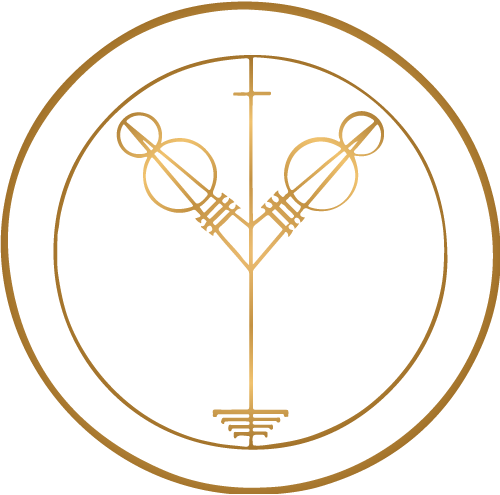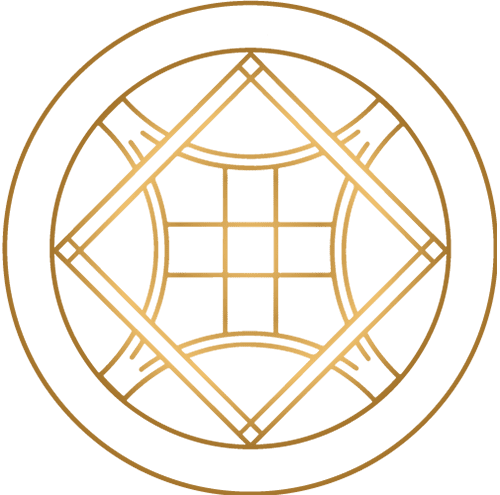Voodoo is a spiritual tradition deeply rooted in history, culture, and the human desire to connect with the divine. Often misunderstood, its complexity and richness as a living religion reflect the enduring legacy of African spiritual practices, their adaptations in the Americas, and their profound impact on societies worldwide.
This essay explores Voodoo through several thematic lenses, including its origins, rituals, moral philosophy, and its evolution in the modern world.
What is Voodoo? Meaning, Origin, and Cultural Significance
The term “Voodoo” originates from the Fon word vò (meaning “spirit” or “deity”) and dù (meaning “altar” or “sacred”). Its roots lie in the languages and cultures of the Fon and Ewe peoples of present-day Benin and Togo in West Africa.
In common parlance, “Voodoo” has been used to describe a wide range of spiritual practices that combine African, Indigenous, and European elements. However, the usage of the term varies: Haitian Vodou emphasizes its connection to Haitian culture, while Louisiana Voodoo refers to practices specific to the Southern United States.
Over time, “Voodoo” has also been misused in media to represent black magic or superstition, often stripping it of its cultural and religious significance.
Origins of Voodoo: West African Traditions and Catholic Influences
Voodoo’s Formation: A Blend of West African and Catholic Traditions
Voodoo originated during the transatlantic slave trade, evolving as a syncretic religion that merged West African spirituality with Catholicism. Enslaved Africans carried with them their cosmologies, ancestral reverence, and animistic rituals, adapting these traditions in the Americas to survive under colonial oppression.
The Role of Catholic Symbols in Voodoo Syncretism
In blending with Catholic practices, African deities (lwa) were often equated with Catholic saints. For example:
Damballa, the serpent deity, was associated with St. Patrick, due to his symbolism with snakes.
Other saints served as representations of lwa that shared similar characteristics.
This adaptation provided a way for practitioners to preserve their faith under the guise of Catholicism, allowing Voodoo to thrive despite attempts to suppress African traditions.
Why Syncretism Was Essential for Survival
The fusion of African spirituality with Catholic elements was not merely a strategy of disguise; it reflected the dynamic adaptability of Voodoo practitioners. This syncretism allowed enslaved communities to sustain their spiritual practices and maintain cultural cohesion in the face of displacement and adversity.
By merging these traditions, Voodoo became both a religion of resilience and a profound example of cultural creativity.
Voodoo and the Slave Trade: Survival and Spiritual Evolution
Voodoo’s Journey Through the Transatlantic Slave Trade
The transatlantic slave trade was instrumental in spreading Voodoo across the Americas. Enslaved Africans carried their spiritual beliefs, which they adapted under oppressive conditions. To preserve their traditions, they often disguised their practices within the framework of Catholicism, merging African cosmology with Christian rituals and saints.
Voodoo’s Role in the Haitian Revolution
A defining moment in Voodoo’s history occurred in Haiti during the 1791 slave revolt. The rebellion, a precursor to the Haitian Revolution, is famously linked to a Voodoo ceremony at Bois Caïman. This event demonstrated Voodoo’s power as both a spiritual and unifying force, inspiring enslaved people to fight for freedom.
Voodoo’s Evolution in Louisiana
In Louisiana, Voodoo adapted further, blending African traditions with local Indigenous practices and French Catholicism. This unique regional expression emphasized charms, potions, and rituals led by figures like the renowned Voodoo Queen, Marie Laveau.
A Symbol of Resistance and Resilience
Despite continuous efforts by colonial powers to suppress African spiritual traditions, Voodoo thrived. It became a vital source of community cohesion, resistance, and cultural identity, showcasing the resilience and adaptability of its practitioners.
Samuel Zohar Yanai specializes in spiritual healing, black magic removal, and protection rituals, offering global services through online communication. Using ethical Kabbalistic practices, he helps clients cleanse negative energies and restore balance. Discover more about the services he provides on Voodoo curse removal.
Rituals and Ceremonies in Voodoo: Spells, Practices, and Symbolism
The Role of Rituals in Voodoo Practices
Rituals and ceremonies in Voodoo are vital for connecting the physical and spiritual realms. Rich in symbolism, they invoke the divine, seek blessings, and provide solutions for personal and communal needs. These ceremonies reflect key Voodoo principles, such as balance, reciprocity, and the relationship with the lwa (spirits).
Symbolism in Voodoo Rituals
Voodoo rituals incorporate various symbolic elements, each carrying deep meaning:
Drumming and Music: Drums create rhythmic patterns to summon spirits and guide participants into a trance-like state. This rhythm represents the heartbeat of the community and a bridge to the spirit world.
Dance: Dances honor specific spirits. Participants may experience spirit possession, embodying the lwa’s energy and receiving their guidance.
Offerings: Items like food, drinks, and candles are offered to the lwa to strengthen their presence and honor their preferences.
Veves: Intricate symbols drawn with flour or cornmeal serve as spiritual doorways, invoking specific spirits.These rituals serve as acts of worship and tools for healing, guidance, and protection, ensuring the community’s spiritual well-being.
Voodoo Spells: Types and Purposes
Spells in Voodoo are practical extensions of its rituals, addressing specific needs and outcomes. They are often personal and include:
Love Spells:
Love spells aim to attract romance, strengthen existing bonds, or rekindle affection. Candles, flowers, and symbolic items are often used to enhance emotional connections, with practitioners focusing on harmony and fulfillment.
Voodoo Protection Spells:
These spells shield individuals from harm, bad luck, or spiritual attacks. Gris-gris bags (protective charms) filled with herbs and sacred objects are common tools. Spiritual baths infused with specific herbs are also used to cleanse and protect.
Voodoo Revenge Spells and Curses:
Revenge spells and curses, often controversial, channel the energy of Petro spirits to address perceived injustices. Practitioners approach these spells cautiously due to their moral implications and potential consequences.
Healing Spells:
Healing spells address physical and spiritual imbalances through a combination of herbs, prayers, and rituals. They aim to restore harmony and well-being.
Hoodoo: A Parallel Tradition of Magic and Spells
While distinct from Voodoo, Hoodoo shares its African roots and incorporates elements of folk magic. Unlike Voodoo, which is a structured religion, Hoodoo focuses on practical spell work to achieve tangible outcomes.
Hoodoo Love Spells:
These spells often use personal items and symbolic objects, such as a love voodoo doll, to attract or deepen romantic relationships.
Hoodoo Protection Spells:
Hoodoo emphasizes protective charms, such as mojo bags and talismans, to guard against harm or negative energy.
Hoodoo Money Spells:
Financial stability is a common focus, with rootwork and candle magic being used to attract prosperity and success.
Hoodoo Curses and Revenge Spells:
Similar to Voodoo, Hoodoo includes spells for justice and retribution, often incorporating herbs, candles, or symbolic dolls.
Voodoo and Hoodoo Misconceptions
Popular culture has sensationalized elements like the voodoo doll and conflated Voodoo and Hoodoo, leading to widespread misunderstandings. In reality, a real voodoo spell or hoodoo magic spell is rooted in cultural traditions and spiritual practices rather than the “bad voodoo” stereotypes often portrayed. Both Voodoo and Hoodoo emphasize empowerment, protection, and community well-being over harm.
Rituals and ceremonies in Voodoo and Hoodoo are profound expressions of cultural and spiritual resilience. From voodoo love spells to hoodoo protection spells, these practices offer pathways to connect with the divine, seek healing, and achieve personal goals.
Their adaptability and deep-rooted symbolism underscore their importance in the African diaspora’s spiritual and cultural legacy. By understanding these practices, we can appreciate their rich heritage and dispel the myths surrounding them.
Samuel Zohar Yanai offers expert spiritual services globally, including helping clients remove love spells that disrupt emotional balance. Using ethical Kabbalistic practices and personalized rituals, he provides effective solutions for spiritual renewal and protection
Role of Priests and Priestesses in Voodoo Healing
Voodoo priests (houngans) and priestesses (mambos) play a critical role in diagnosing and addressing spiritual imbalances. Using divination, they identify the root causes of ailments and prescribe remedies that may involve rituals, herbal preparations, or offerings to the spirits. Their expertise ensures effective communication with the spiritual realm to facilitate healing and restore balance.
Bondye and the Lwa: Exploring the Voodoo Pantheon
Bondye: The Supreme Creator in Voodoo
In Voodoo, Bondye (from the French Bon Dieu, meaning “Good God”) is the supreme, all-powerful creator. Bondye is viewed as distant and uninvolved in daily human affairs, leaving the management of worldly matters to the spirits known as the lwa.
H3: The Role of the Lwa in Voodoo Practices
The lwa serve as intermediaries between Bondye and humanity, embodying various aspects of life such as love, fertility, war, and justice. Each lwa has a distinct personality, preferences, and responsibilities, making them accessible to devotees for guidance and support.
Erzulie: Represents love and beauty, often invoked in matters of romance and emotional healing.
Ogou: A warrior spirit associated with strength, protection, and justice.
Damballa: A serpent deity symbolizing creation and wisdom.
Worship and Honoring the Lwa
Devotees connect with the lwa through offerings, songs, dances, and rituals tailored to each spirit’s unique preferences. Offerings may include food, candles, and specific items that align with the lwa’s attributes. Rituals often involve music and drumming, creating a sacred space for communication and spiritual alignment.
The concept of Bondye and the lwa forms the core of the Voodoo Pantheon, reflecting a dynamic spiritual system that bridges the divine and human realms. By honoring the lwa, practitioners maintain balance and seek guidance in their personal and communal lives, ensuring a harmonious connection to the spiritual world.
Voodoo Healing Practices: A Holistic Approach to Wellness
Voodoo healing practices integrate physical, emotional, and spiritual dimensions to address imbalances that manifest as illness or distress. Rooted in African traditions, these practices emphasize restoring harmony between individuals, their communities, and the spirit world. Healing is seen as both a personal and collective process, often involving ritual, herbal remedies, and spiritual intervention.
Core Principles of Voodoo Healing
Interconnected Realms: Health issues are believed to stem from disruptions in the spiritual realm or ancestral influences.
Community Support: Healing is often a communal effort, reflecting the interconnected nature of human and spiritual relationships.
Natural and Spiritual Remedies: Herbs and rituals are used to address both physical symptoms and their spiritual causes.
Healing Rituals
Spiritual Cleansing: Rituals such as herbal baths and smoke cleansing remove negative energy or spiritual blockages.
Offerings to Spirits: Food, candles, and symbolic items are presented to spirits or ancestors to seek their assistance.
Spirit Possession: In some cases, spirits are invited to possess a practitioner, offering direct guidance or healing energy.
Role of Herbal Medicine
Herbs are central to Voodoo healing, used for their medicinal and spiritual properties:
Decoctions: Teas for treating physical ailments like fevers or inflammation.
Poultices: Topical applications for pain relief or wound healing.
Spiritual Plants: Basil, sage, and similar herbs are used for purification and protection.
Protection and Healing Charms
Gris-gris (charms) are crafted to provide ongoing protection or attract positive outcomes. These small pouches contain herbs, stones, and symbolic items, tailored to the user’s needs.
Voodoo healing is a holistic approach rooted in harmony between body, spirit, and community. It provides practical and spiritual tools to address life’s challenges, blending ancient wisdom with adaptability in modern contexts.
As a skilled Voodoo healer, Samuel Zohar Yanai offers expert guidance in removing curses, breaking spiritual blockages, and restoring harmony. Using ethical Kabbalistic rituals, his services are available globally through online communication. Explore his specialized services on Voodoo Healing and Black Magic Removal.
Voodoo Dolls: Myths, Misconceptions, and Their True Purpose
Voodoo Dolls in Tradition and Practice
Contrary to the depictions in popular culture, voodoo dolls are not tools of malice or instruments for casting harm. In authentic voodoo practices, these dolls serve as symbolic representations of healing, spiritual connection, and prayer. They are created with care, embodying intentions such as protection, emotional healing, or guidance from the lwa (spirits).
Misconceptions About Voodoo Dolls in Western Media
Hollywood and Western media have distorted the image of voodoo dolls, portraying them as objects used for harm or manipulation, often linked to voodoo curses. This sensationalized depiction perpetuates harmful stereotypes, overshadowing their true cultural and spiritual significance.
The Positive Use of Voodoo Dolls
Healing and Protection:
In Voodoo, dolls are used in rituals to invoke the spirits for healing and protection. Offerings and prayers may accompany their use to align intentions with the spiritual realm.
Love and Emotional Harmony:
Love voodoo dolls are symbolic tools for attracting affection or strengthening bonds. Unlike the misconceptions of manipulation, these dolls focus on fostering positive energy in relationships.
Spiritual Focus:
Dolls can act as a focal point for connecting with specific lwa, assisting practitioners in channeling their prayers or intentions effectively.
Hoodoo Dolls and Folk Magic
In hoodoo magic, dolls share a similar purpose, often used in hoodoo love spells or protection rituals. These hoodoo dolls reflect the practical nature of folk magic, blending African traditions with European and Indigenous influences. While often conflated with Voodoo, Hoodoo operates as a separate spiritual practice, emphasizing spellwork tailored to tangible outcomes.
Role of Voodoo Spell Casters
Practitioners skilled in voodoo practices and rituals, often called voodoo spell casters, may incorporate dolls into ceremonies to focus their intentions or amplify the power of a ritual. Their work highlights the doll’s role as a positive and intentional spiritual tool rather than an object of harm.
The true purpose of voodoo dolls lies in their role as sacred tools for healing, spiritual connection, and intention-setting. Dispelling myths about voodoo curses and harmful practices is essential to honoring the cultural and spiritual heritage of Voodoo.
By understanding their authentic use, we can appreciate their profound significance and move beyond the harmful stereotypes perpetuated by popular culture.
Modern Perceptions of Voodoo: From Stigma to Cultural Heritage
Voodoo has faced centuries of stigma, branded as witchcraft or black magic by colonial and religious authorities. However, it is increasingly recognized as an essential aspect of cultural heritage, particularly in Haiti and Louisiana. Its influence extends to Western media, inspiring films, music, and literature that, while often sensationalized, highlight its enduring appeal.
Voodoo and Witchcraft: Understanding the Cross-Cultural Links
While often conflated, Voodoo and witchcraft are distinct practices. Voodoo is a religion with structured rituals and a defined cosmology, while witchcraft refers broadly to practices of magic and sorcery across cultures. Cross-cultural links exist in the shared use of spells, symbols, and spiritual tools, but their underlying philosophies differ.
Morality in Voodoo: The Interplay Between White Magic (Rada) and Black Magic (Petro)
Morality in Voodoo is nuanced, reflected in the dualistic nature of Rada (benevolent spirits) and Petro (fierce or aggressive spirits). While Rada rituals focus on healing and harmony, Petro rituals address justice and protection, sometimes invoking more forceful means. This interplay reflects the adaptability of Voodoo to human needs and circumstances.
The Psychological Impact of Voodoo Rituals on Believers
Voodoo rituals offer psychological benefits, fostering a sense of connection, purpose, and community. The act of invoking spirits, participating in collective ceremonies, and seeking spiritual guidance can provide emotional support, alleviate stress, and promote mental well-being.
Ethical Implications of Spiritual Practices in Voodoo
The ethical dimensions of Voodoo practices hinge on intent and balance. While spells and rituals can be used for various purposes, practitioners emphasize accountability and respect for spiritual laws. The misuse of spiritual power for harm is discouraged, reflecting the moral values embedded in Voodoo.
Voodoo as a Living Religion: Challenges in a Globalized World
As a living religion, Voodoo faces challenges in a globalized world, including cultural appropriation, commercialization, and the erosion of traditional practices. However, efforts to preserve its authenticity and educate the public about its significance offer hope for its continued vitality.
Voodoo exemplifies human resilience, creativity, and the enduring power of spirituality. Its rich history, diverse expressions, and profound influence on culture and society make it a subject worthy of deeper understanding and respect.
As a living religion, it continues to evolve, bridging the past and the present while offering timeless insights into the human spirit.
From Voodoo’s Resilience to Modern Spiritual Healing Practices
Voodoo is a testament to human resilience, creativity, and the enduring power of spirituality. Its rich history, diverse expressions, and profound influence on culture and society make it a subject worthy of deeper understanding and respect. As a living religion, it continues to evolve, bridging the past and the present while offering timeless insights into the human spirit.
In the realm of spiritual healing, practitioners like Samuel Zohar Yanai, an expert in removing black magic, play a pivotal role in preserving and adapting these ancient traditions.
With over 25 years of experience, Samuel specializes in black magic removal, spiritual counseling, and Kabbalistic healing. His services are grounded in ethical principles, focusing on cleansing individuals of negative energies and harmful spells without causing harm to others.
By integrating deep-rooted Kabbalistic knowledge with personalized rituals, Samuel assists individuals in restoring balance and harmony in their lives. His commitment to spiritual ethics and comprehensive understanding of mystical practices make him a trusted guide for those seeking healing and protection in today’s complex world.













